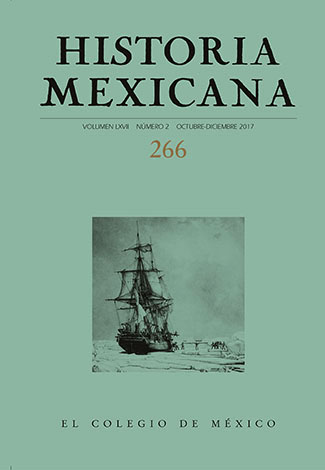Resumen
Este artículo acompaña el proceso de “rescate” de un tesoro de valor incalculable, retirado del fondo del Cenote Sagrado de Chichen Itzá, con ayuda de una primitiva draga instalada en sus orillas por el entonces cónsul de los Estados Unidos de América del Norte en Progreso, Edward H. Thompson, financiada por fondos del Peabody Museum de Harvard University y recursos privados de coleccionistas del área de Boston. El “rescate” inició en 1904 y se prolongó hasta 1907, con reiteraciones episódicas hasta 1909, año de la dimisión de Thompson de su cargo consular y del inicio del desmadejamiento de las redes de complicidad que se habían venido tejiendo desde 1875 para permitir la exportación ilegal de centenas de piezas “mayas” hacia la universidad de Cambridge. El texto termina en 1914, cuando la violencia revolucionaria detiene accidentalmente la sangría.
Citas
- Boas, Franz, “Summary of the Work of the International School of American Archaeology and Ethnology in Mexico, 1910-1914”, en American Anthropologist, nueva serie, 17: 2 (abr.-jun. 1915), pp. 384-395. DOI: https://doi.org/10.1525/aa.1915.17.2.02a00210
- Browman, David L. y Stephen Williams, Anthropology at Harvard. A Biographical History, 1790-1940, Cambridge, Mass., Harvard University Press, 2013.
- Buckmaster, Henrietta, Let my people go: the story of the underground railroad and the growth of the abolition movement, Columbia, S.C., University of South Carolina Press, 1992.
- Burnhouse, Robert Levere, In Search of the Maya: the first archaeologists, Albuquerque, N.M., University of New México, [c1973].
- Coggins, Clemency Chase (ed.) “Dredging the Cenote”, en Artifacts from the Cenote of Sacrifice, Chichén Itzá, Yucatán, Cambridge, Mass., Peabody Museum, Harvard University Press, 1992, pp. 9-31.
- Cole, L. J., “The caverns and people of Northern Yucatan”, en Bulletin of the American Geographical Society, XLII: 5 (1910), pp. 321-336. DOI: https://doi.org/10.2307/199038
- Chauvenet, Beatrice, Hewett and Friends: a Biography of Santa Fe’s Vibrant Era, Albuquerque, Museum of New Mexico Press, 1982.
- Desmond, Lawrence Gustave, “Augustus Le Plongeon. A Fall from Archaeological Grace”, en Kehoe y Emmerichs (ed.), 1999, pp. 25-35.
- Desmond, Lawrence Gustave y Phyllis Mauch Messenger, A Dream of Maya. Augustus and Alice Le Plongeon in Nineteenth-Century Yucatan, Albuquerque, University of New Mexico, 1988.
- Dumas, Claude, Justo Sierra y el México de su tiempo, 1848-1912, México, Universidad Nacional Autónoma de México, 1992, t. II.
- Godoy, Ricardo, “Franz Boas and his Plan for an International School of American Archaeology and Ethnology in Mexico”, en Journal of the History of the Behavioral Sciences, 13 (1977), pp. 228-242. DOI: https://doi.org/10.1002/1520-6696(197707)13:3<228::AID-JHBS2300130303>3.0.CO;2-S
- Graham, Ian, “Exposing the Maya”, en Archaeology magazine, 43: 5 (sep.-oct. 1990), pp. 36-43.
- Gutiérrez Ruvalcaba, Ignacio, Teoberto Maler: historia de un fotógrafo vuelto arqueólogo. Testimonios del Archivo, México, 2008.
- Kehoe, Alice B. y Mary Beth Emmerichs (ed.), Assembling the Past: Studies in the Professionalization of Archaeology, Albuquerque, University of New Mexico, 1999.
- Kuntz Ficker, Sandra, Las exportaciones mexicanas durante la primera globalización, 1870-1929, México, El Colegio de México, 2010. DOI: https://doi.org/10.2307/j.ctv47w6xr
- Joseph, Gilbert, Revolución desde afuera. Yucatán, México y los Estados Unidos, 1880-1924, México, Fondo de Cultura Económica 2010.
- Mark, Joan T., Four Anthropologists: An American Science in its Early Years, Nueva York, Science History Publications, 1980.
- Mediz Boio, Antonio, A la sombra de mi ceiba, Mérida, Yuc., Producción Editorial Dante, 1987.
- Palacios, Guillermo, “Los Bostonians, Yucatán y los primeros rumbos de la arqueología americanista estadounidense, 1875-1894”, en Historia Mexicana, LX:1 (245) (jul.-sep. 2012), pp. 105-193.
- Palacios, Guillermo, Maquinaciones neoyorquinas y querellas porfirianas. Marshall M. Saville, el American Museum of Natural History y las primeras leyes de protección al patrimonio arqueológico nacional, México, El Colegio de México, 2014.
- Palacios, Guillermo, “El cónsul Thompson, los Bostonians y la formación de la Galaxia Chichén, 1893-1904”, en Historia Mexicana, LXV:1 (257) (jul.-sep. 2015), pp. 167-288. DOI: https://doi.org/10.24201/hm.v65i1.3136
- Reed, Nelson, La guerra de castas de Yucatán, México, Ediciones Era, 1985.
- Rutsch, Mechthild, Entre el campo y el gabinete: nacionales y extranjeros en la profesionalización de la antropología mexicana (1877-1920), México, Instituto Nacional de Antropología e Historia, Universidad Nacional Autónoma de México, 2007.
- Sellen, Adam, “El último viaje de Santiago Bolio”, en Carolina DEPETRIS (ed.), Viajeros por el mundo maya, México, Universidad Nacional Autónoma de México, 2011.
- Swanton, F. N, J. R., “Anthropologic Miscellanea, Mexican Archeology and Ethnology”, en American Anthropologist, New Series, 15: 3 (jul.-sep. 1913), pp. 540-541. DOI: https://doi.org/10.1525/aa.1913.15.3.02a00140
- Thompson, H.W., People of the Serpent. Life and Adventure among the Mayas, Nueva York, Capricorn Books, 1965.
- Thompson, J. Eric S., “1914: La Carnegie Institution of Washington ingresa al campo maya”, en Estudios de Cultura Maya, 4 (1964), pp. 167-175. DOI: https://doi.org/10.19130/iifl.ecm.1964.4.237
- Weeks, John M. y Jane Hill (comps.), The Carnegie Maya: the Carnegie Institution of Washington research program, 1913-1957, Boulder, Colorado, The University Press of Colorado, 1992.
- Wells, Allen y Gilbert Joseph, Summer of Discontent, Seasons of Upheaval: Elite Politics and Rural Insurgency in Yucatan, 1876-1915, Stanford, Calif., Stanford University Press, 1996. DOI: https://doi.org/10.1515/9781503616110
- Willard. T. A., The City of the Sacred Well, being a narrative of the discoveries and excavations of Edward Herbert Thompson in the ancient city of Chichén Itzá with some discourse on the culture and development of the Mayan civilization as revealed by their art and architecture, Nueva York, Londres, The Century Co., 1926.
Cómo citar
-
Resumen1823
-
PDF1189
-
XML1612
Artículos más leídos del mismo autor/a
- Guillermo Palacios, Sobre Narciso Bassols Batalla, El pensamiento político de Obregón , Historia Mexicana: Vol. 17, Núm. 2 (66) octubre-diciembre 1967
- Guillermo Palacios, Julio Cuadros Caldas: un agrarista colombiano en la revolución mexicana , Historia Mexicana: Vol. 49, Núm. 3 (195) enero-marzo 2000
- Hira de Gortari, Guillermo Palacios, El comercio novohispano a través de Veracruz (1802-1810) , Historia Mexicana: Vol. 17, Núm. 3 (67) enero-marzo 1968
- Guillermo Palacios, El cónsul Thompson, los Bostonians y la formación de la galaxia Chichén, 1893-1904 , Historia Mexicana: Vol. 65, Núm. 1 (257) julio-septiembre 2015
- Guillermo Palacios, Los Bostonians, Yucatán y los primeros rumbos de la arqueología americanista estadounidense, 1875-1894 , Historia Mexicana: Vol. 62, Núm. 1 (245) julio-septiembre 2012
- Guillermo Palacios, Calles y la idea oficial de la Revolución Mexicana , Historia Mexicana: Vol. 22, Núm. 3 (87) enero-marzo 1973
- Guillermo Palacios, Sobre Carlos Illades y Rodolfo Suárez (coords.), México como problema: esbozo de una historia intelectual , Historia Mexicana: Vol. 64, Núm. 1 (253) julio-septiembre 2014
- Guillermo Palacios, De imperios y repúblicas: los cortejos entre México y Brasil, 1822-1867 , Historia Mexicana: Vol. 51, Núm. 3 (203) enero-marzo 2002
- Guillermo Palacios, Sobre Stephen Haber (coord.), How Latin America Fell behind. Essays on the Economic Histories of Brazil and Mexico, 1800-1914 , Historia Mexicana: Vol. 48, Núm. 1 (189) julio-septiembre 1998
















